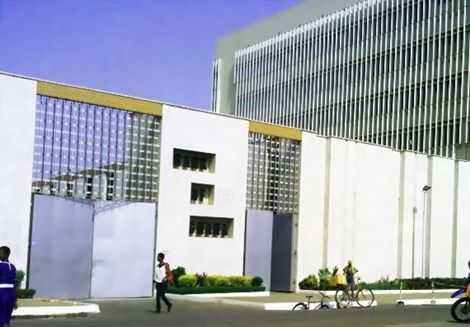The banking industry, which had previously been resolute, is now exhibiting signs of vulnerability – as latest data show that the primary financial segment experienced mixed fortunes in 2022.
In its first Summary of Economic Financial Data of the year – published on
conclusion of the 110th Monetary Policy Committee (MPC) meeting – the Bank of
Ghana (BoG) indicated that while metrics such as total assets, credit and
interest incomes grew last year compared to previous year, others including
profitability and Capital Adequacy Ratio (CAR) tumbled.
The data showed that the total assets of the industry increased throughout the
year, reaching GH¢200billion at the end of June and peaking with
GH¢249.9billion and GH¢250.6billion in October and November respectively.
However, at the end of last year it fell to GH¢221 billion – a 22.91 percent
decrease from the previous year – as banks began responding to the Domestic
Debt Exchange Programme (DDEP).
Its total investments also contracted by 4.8 percent to GH¢79.2billion in
December 2022, compared to 29 percent annual growth in 2021.
“This is due to banks rebalancing asset portfolios in response to the Domestic
Debt Exchange Programme,” said central bank Governor Dr. Ernest Addison at a
press briefing following the MPC meeting.
He added that the sector is broadly reflective of the current macroeconomic
conditions, with rising cost of credit due to inflationary pressures and
revaluation-driven balance sheet performance.
Unsurprisingly, banks’ profitability levels took a nosedive – attributed to
mark-to-market losses on investments, higher impairments on loans and rising
operating costs. Post-tax profit stood at GH¢3.9billion at the end of December
2022, a contraction of 18.9 percent year-on-year compared to 12.3 percent
growth in 2021.
Another area of obvious stress was seen in CAR for the industry, which declined
to 16.6 percent in December 2022 but remained above the prudential regulatory
minimum of 13 percent. The sector’s profitability indicators, such as return on
equity and return-on-assets, also declined.
Also, post-tax profit stood at GH¢3.9billion at the end of December 2022, a
contraction of 18.9 percent year-on-year compared to 12.3 percent growth in
2021.
On the positive side, the non-performing loans (NPLs) ratio improved to 14.8
percent in December 2022 compared to 15.2 percent in December 2021.
This improvement, the Governor explains, is attributable to high credit growth
relative to the increased stock of NPLs.
Total deposits meanwhile reached GH¢157.9billion, with a growth of 30.4 percent
in 2022 compared to 16.6 percent in 2021, in the face of upward adjustments to
the industry’s Cash Reserve Requirement (CRR). Credit also continued on an
upward trajectory, recording a 30.2 percent increase to GH¢70billion in
December 2022 from GH¢53.8billion a year before.
In addition, there was growth in new loans and advances in 2022 of
GH¢53.7billion, reflecting an annual growth of 47.5 percent, compared with the
growth of 6.8 percent in 2021.
Despite the decline in profitability the industry’s operating income increased
by 30.9 percent, due to a rise in net fees and commissions and net interest
income. Operating expenses however rose by 32.2 percent and provisions
increased sharply by 184 percent, contributing to the decline in profit before
tax.
Analysis
These developments come on the back of an otherwise turbulent year in 2022,
when banks were subject to a number of regulatory actions aimed at curbing the
hydra-headed forces of foreign exchange speculation and consequent currency
depreciation, inflation and increased domestic borrowing by government.
A key instrument deployed by the BoG was the sudden 400 basis points (bps)
upward adjustment to the CRR – above the pre-pandemic level of 10 percent to 12
percent.
Following the conclusion of an emergency meeting of the apex bank’s MPC in
September 2022, the CRR was further hiked by 300 bps – albeit in a phased
manner – end November 2022.
Banks, which hold approximately a third of the nation’s domestic debt, are set
for a more muted performance in 2023 on account of the impending DDEP.
Source:
B&FT

